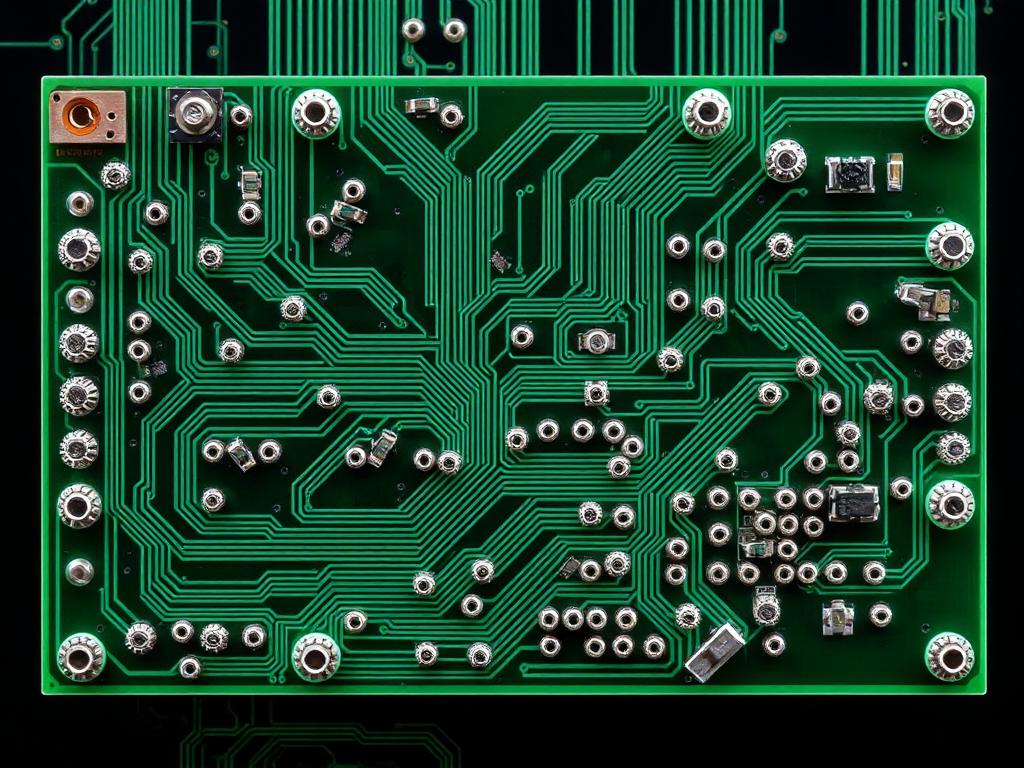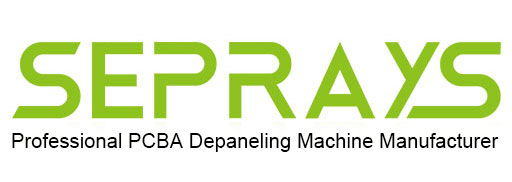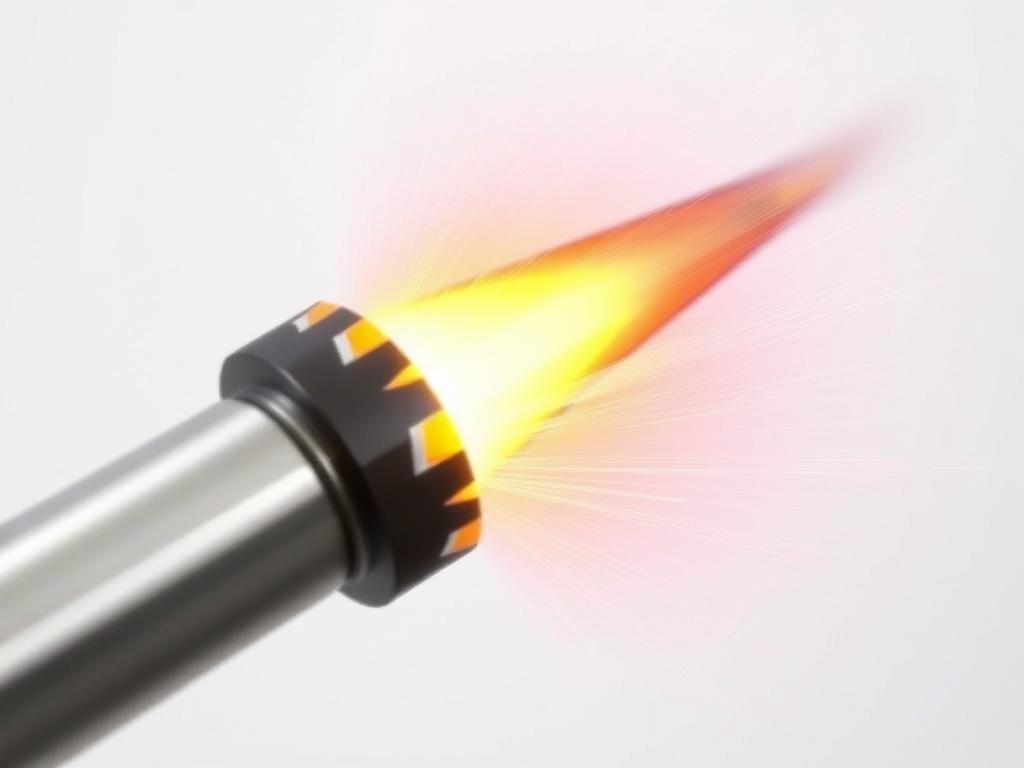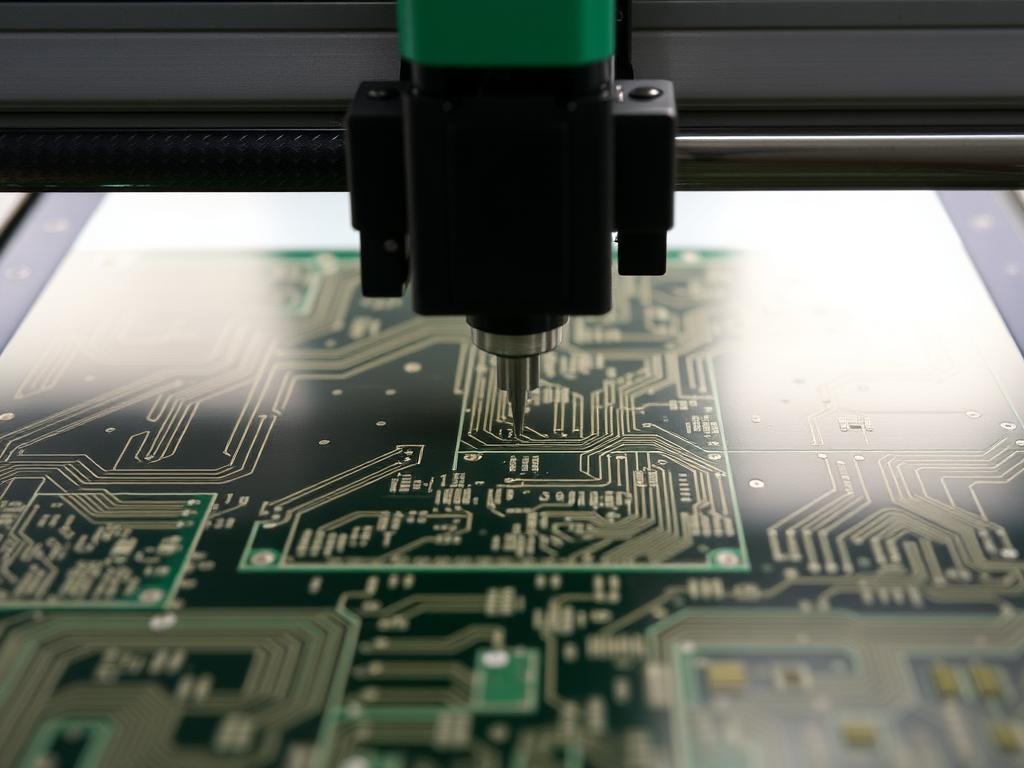![]()

PCB depaneling for telecommunications
Revolutionizing PCB Depaneling: Exploring Laser, Router, and More for Automotive and Beyond
Hey there, fellow innovators and PCB enthusiasts! With over 20 years immersed in the intricate world of PCB manufacturing, I’ve witnessed firsthand the evolution of depaneling techniques. From the traditional methods to the cutting-edge laser technologies, I’ve seen it all. This article isn’t just another overview; it’s a journey through the most effective and efficient cara pcb depaneling, tailored to help you choose the perfect solution for your needs, especially in demanding sectors like the automotive industry. Whether you are involved in perakitan pcb for complex piranti elektronik or looking for a solution to kapisah Panjenengan Papan sirkuit dicithak individu, you’re in the right place. Let’s dive in and explore the fascinating world of pcb singulation.
What is PCB Depaneling, and Why is it Crucial?
Let’s get started. PCBs are typically manufactured in panel luwih gedhe formats, containing multiple copies of the desired sirkuit design, which is very crucial for produksi pcb. This approach streamlines the proses produksi, allowing for faster and more cost-effective production. However, before these papan sirkuit dicithak can be integrated into final products, the individual circuits must be kapisah from the panel – that’s where pcb ngarepeling comes in.
PCB ngarepeling, which is also called singulation, is the process of removing individual printed circuit boards from the larger panel. This crucial step is necessary in perakitan pcb as it transforms the panel into usable, individual boards ready for use in electronic products. The quality of the proses ngarepeling significantly impacts the final product’s quality and reliability. It must ensure no tekanan mekanik or damage occurs to the komponen sensitif ing papan sirkuit.
What are the Main Depaneling Methods for PCBs?
Over my two decades in the field, I’ve seen a variety of methods employed for separating pcbs. Each method has its own advantages and disadvantages, making certain approaches more suitable for specific applications. Here are some of the most common metode depaneling:
- V-Groove Depaneling: One of the most common cara pcb depaneling, this technique uses a v-skor to create a weak line on the panel before the individual boards are kapisah. This is usually a one of the most common technique, however, it is not very precise and might be unsuitable for smaller pcbs.
- Router: Using a gilingan utawa router, this method cuts out the individual papan sirkuit saka ing panel along a predetermined path. This method is highly versatile and provides a good balance of precision and speed.
- Punching: Employing a die, this method rapidly kapisah individu pcbs, suitable for mass production with simple garis potong designs. The use of punch is one of the most cost-effective techniques.
- Laser ngarep: This advanced method utilizes a sinar laser to precisely kapisah individu pcbs. It’s highly accurate, suitable for both fleksibel pcb and rigid boards, and reduces tekanan mekanik.
The choice of method often depends on factors such as material, desired presisi, panel complexity, and production volume.
Why Choose Laser Depaneling for PCBs?
Ing pengalamanku, laser ngarepeling is a game-changer, particularly when precision and minimal stress are critical. Unlike methods that apply physical force, laser pcb depaneling nggunakake fokus sinar laser kanggo Cut liwat substrate saka pcb without any physical contact. Here are a few reasons why laser is rapidly becoming the preferred choice for nglereni pcb:
- Precision dhuwur: Ing laser offers unparalleled presisi with a fine focused sinar laser, ensuring clean and accurate cuts with a very narrow ngethok kerf, especially important for pcbs with delicate and komponen sensitif.
- Pengurangan Tekanan Mekanik: Because it’s a non-contact metode pemotongan, laser ngarepeling minimizes the tekanan mekanik ing pcb sajrone proses ngarepeling. This is very important, especially for lentur pcbs and thin boards where even slight pressure can cause damage.
- Versatility: From complex designs to various materials, a laser can handle it all, including both rigid and fleksibel pcb. This versatility allows for a wider range of applications, making it a go-to option for diverse produksi pcb kabutuhan.
- Clean Cut Edges: This method provides very clean cut edges, reducing the risk of debris or burrs, which are crucial for ensuring technical cleanliness in applications.
How Does Laser Technology Benefit the Automotive Industry?
Ing automotive industry is at the forefront of technological advancements, and teknologi laser plays a pivotal role in this transformation. Given the stringent requirements for reliability and durability in automotive applications, using laser kanggo pcb ngarepeling offers significant advantages:
- High Reliability: Laser ngarepeling njamin sing pcbs used in vehicles are free from damage caused by physical cara pcb depaneling. This is very important in an environment where boards have to perform in harsh conditions, assuring the quality and reliability saka piranti elektronik in automobiles.
- Complex Designs: nglereni laser ngidini kanggo ruwet garis potong designs, essential for the miniaturization of electronic components in modern vehicles.
- Adaptable Process: This method is adaptable to the continuous innovation in otomotif electronics, which allows for easy adjustments to process changes, and allows quick turnaround.
- Reduced Risk of Contamination: Maintaining a high standard of karesikan is a must in manufaktur elektronik, and the non-contact method of laser ngarepeling minimizes the risk of contamination during the proses ngarepeling. This is especially important for sensor and control systems used in cars.
With the automotive industry continuing to embrace cutting-edge technology, laser ngarepeling is proving itself to be a very essential tool for producing high-quality, reliable electronic components.
Are There Other Viable PCB Cutting Methods Besides Laser?
Nalika laser ngarepeling offers many benefits, other nglereni pcb methods remain relevant, especially when budgets or other constraints are a concern. The choice of method is highly dependent on specific requirements and priorities. Here are some alternative methods:
- V-Cut/V-Score: This metode pemotongan is cost-effective for straight line kapisah and is commonly used in high-volume production for simpler sirkuit designs. The main advantage is cost-effectiveness.
- Router: A router with a mill is very flexible and provides good presisi for complex garis potong designs. However, this can create dust, and special equipment should be used to keep the area clean.
- Pukulan: This approach is ideal for high-speed and high-volume kapisah saka pcbs that have simple shapes.
The decision to go with a laser, router, punch or another method will depend on multiple factors, including the cost, the specific requirements of your application and what you are looking for.
How Does a Router Compare to Laser in PCB Depaneling?
When comparing a router kanggo laser kanggo pcb ngarepeling, it’s clear that each has its advantages. The key difference is in how the proses mbusak ing individual printed circuit boards is achieved.
A router uses a milling tool to cut through the pcb along a predetermined path, offering good presisi and adaptability. It’s a cost-effective solution for various designs and materials and provides high throughput. However, the physical contact with the papan sirkuit during the milling process can produce dust, and can exert some degree of tekanan mekanik and can be noisy.
In contrast, laser ngarepeling is a non-contact method, using a sinar laser to cut through the material. This approach offers very high presisi, minimal tekanan mekanik, and very clean cut edges without debris. However, the initial investment in sistem laser can be higher compared to routers.
The table below summarizes a comparison between router lan laser:
| Fitur | Router | Laser |
|---|---|---|
| Precision | apik | dhuwur |
| Tekanan Mekanik | Moderate | Minimal |
| Material Versatility | apik | Dhuwur Banget |
| Kacepetan | apik | dhuwur |
| Dust/Debris | Moderate | Minimal |
| Biaya wiwitan | Ngisor | Luwih dhuwur |
| Complexity | Suitable for most | Suitable for everything |
Ultimately, the choice between a router lan laser depends on your specific requirements, budget, and desired results.
What Role Does Precision Play in PCB Depaneling?
Precision wigati ing pcb ngarepeling, and one of the most important factors in ensuring the quality and reliability of electronic products. Inaccurate ngarepeling can lead to damage to the pcb and its components, which can cause malfunctions or complete failure.
For very sensitive applications, like medical devices or automotive applications, presisi is a must. The tighter the tolerances on kacepetan nglereni, ing ngethok kerf width, and the position of the cut, the better the quality of the final product. Laser ngarepeling nawakake paling dhuwur presisi, achieving cut kerfs that are extremely narrow, which is crucial in reducing the amount of material wasted and enabling the production of smaller, more complex electronic circuits.
What are the Challenges of PCB Depaneling and How to Overcome Them?
Despite all the advancements, pcb ngarepeling comes with its fair share of challenges. Some of these challenges include:
- Tekanan Mekanik: Methods like punch or v-potong can induce tekanan mekanik, which can damage the components, especially for flex pcbs and thin boards.
- Dust and Debris: Router lan gilingan operations can produce dust, which, if not managed correctly, can cause contamination and affect the final product.
- Material Limitations: Not all metode pemotongan are suitable for all pcb materials. For instance, some materials might not be suitable for v-potong.
- Akurasi: Achieving high presisi with some of the older methods can be tricky, especially when working with complex designs.
To overcome these challenges, you have to utilize the right techniques and technologies. Using sistem laser lan majeng sistem ngarepeling can minimize tekanan mekanik and reduce the risk of contamination. Additionally, continuous monitoring and strict adherence to technical cleanliness protocols are essential.
How Can Advanced Depaneling Systems Improve Manufacturing Process?
Majeng sistem ngarepeling incorporate features that streamline the proses ngarepeling, reduce errors, and improve overall efficiency. Here are some ways these systems enhance the proses produksi:
- otomatisasi: Majeng sistem ngarepeling karo otomatis reduce human error and speed up production, which leads to higher throughput.
- Ngawasi Real-Time: Modern systems use sensors that monitor the proses ngarepeling in real-time, helping to detect any potential problems as they occur.
- Fleksibilitas: Advanced systems are adaptable, allowing for quick switching between pcb types and garis potong designs, which is useful in dynamic production environments.
- Data Analysis: Many systems can gather data about the proses, allowing users to quickly locate bottlenecks or problems, which will reduce costs.
- Integrated Cleaning: Sawetara majeng sistem ngarepeling include cleaning stations, helping maintain high standards of karesikan.
These advanced sistem ngarepeling play a crucial role ing modern manufaktur elektronik, and help increase efficiency, and ensure the production of high-quality pcbs.
How Do I Choose the Right PCB Depaneling Solution for My Application?
Milih tengen pcb ngarepeling solution is a complex task that needs a comprehensive understanding of your specific needs. Here are some questions you should consider before making your choice:
- What type of pcb are you working with? Are they rigid, flexible, or a combination?
- What level of presisi is needed for your project?
- What is the volume of production?
- How sensitive are the components on the papan sirkuit?
- What’s your budget?
Milih sing bener sistem ngarepeling needs a lot of careful planning and consultation with the experts. Understanding your needs and knowing the different types of metode depaneling is the first step toward making an informed decision.
We are the world’s leading PCB depaneling machine manufacturer, with our products loved by TP-LINK, Canon, BYD, Flex, TCL, Xiaomi, Lenovo, OPPO, HONOR, Foxconn and other Fortune 500 customers. Our extensive experience and technical expertise can help you find the right solution for your specific needs. Whether you’re looking for laser pcb depaneling, kacepetan dhuwur router, or any other sistem ngarepeling, we are here to assist you. Hubungi kita today to learn more about how we can optimize your perakitan pcb baris.
FAQs
Apa prabédan utama antarane laser ngarepeling lan router depaneling? Laser ngarepeling is a non-contact method that uses a focused sinar laser kanggo Cut liwat pcb, providing very high presisi lan minimal tekanan mekanik. Ing kontras, router depaneling uses a milling tool to physically cut through the pcb, which is often a good balance of speed and presisi, but can generate dust and impose some degree of stress.
Is laser ngarepeling cocok kanggo kabeh jinis pcbs? iya, laser ngarepeling is very versatile and suitable for a wide range of pcbs, including rigid boards, fleksibel pcb, and more. It also works well on different materials, including fr4.
Bisa laser ngarepeling handle complex and intricate designs? Absolutely! One of the key advantages of laser ngarepeling is its ability to cut complex and intricate shapes, making it very suitable for advanced electronic devices that have precise garis potong rancangan.
Apa sing kaluwihan saka v-potong depaneling, and what are its limitations? V-cut depaneling is very cost-effective, especially for high-volume production that involves a straight garis potong. However, it lacks the presisi needed for complex designs and can result in tekanan mekanik ing komponen sensitif.
What is the role of technical cleanliness ing pcb ngarepeling? Technical cleanliness is a very important aspect of pcb ngarepeling, utamané kanggo piranti elektronik where contaminants can impact functionality. Methods like laser ngarepeling help ensure technical cleanliness by minimizing the generation of dust or debris.
Takeaways Key
- PCB ngarepeling iku langkah wigati ing perakitan pcb lan ing proses produksi, where Papan sirkuit dicithak individu are separated.
- Laser ngarepeling offers superior presisi, minimal tekanan mekanik, and clean cuts, making it suitable for automotive applications and other high-precision sectors.
- Router, pukulan, lan v-potong methods remain relevant for specific applications where cost or throughput are crucial factors.
- Majeng sistem ngarepeling enhance efficiency through otomatis, real-time monitoring, and flexibility.
- Milih tengen pcb ngarepeling solution requires a comprehensive understanding of your specific needs, budget, and application.
I hope this journey through the world of pcb ngarepeling has been insightful. If you’re ready to elevate your produksi pcb capabilities, consider our range of advanced depaneling solutions. We are here to help you make informed decisions. You can learn more about our GAM 380AT PCB Ngisor Mesin Depaneling, explore options for V-Groove Depaneling, or check out our Mesin Punching PCB/FPC. Also make sure to take a look at our accessories to find the needed cutting heads. You might also be interested in our Peralatan otomatis. To explore your options for PCB Laser Depaneling or get expert advice, please do not hesitate to hubungi kita today! Let’s create a better, more efficient future together!




